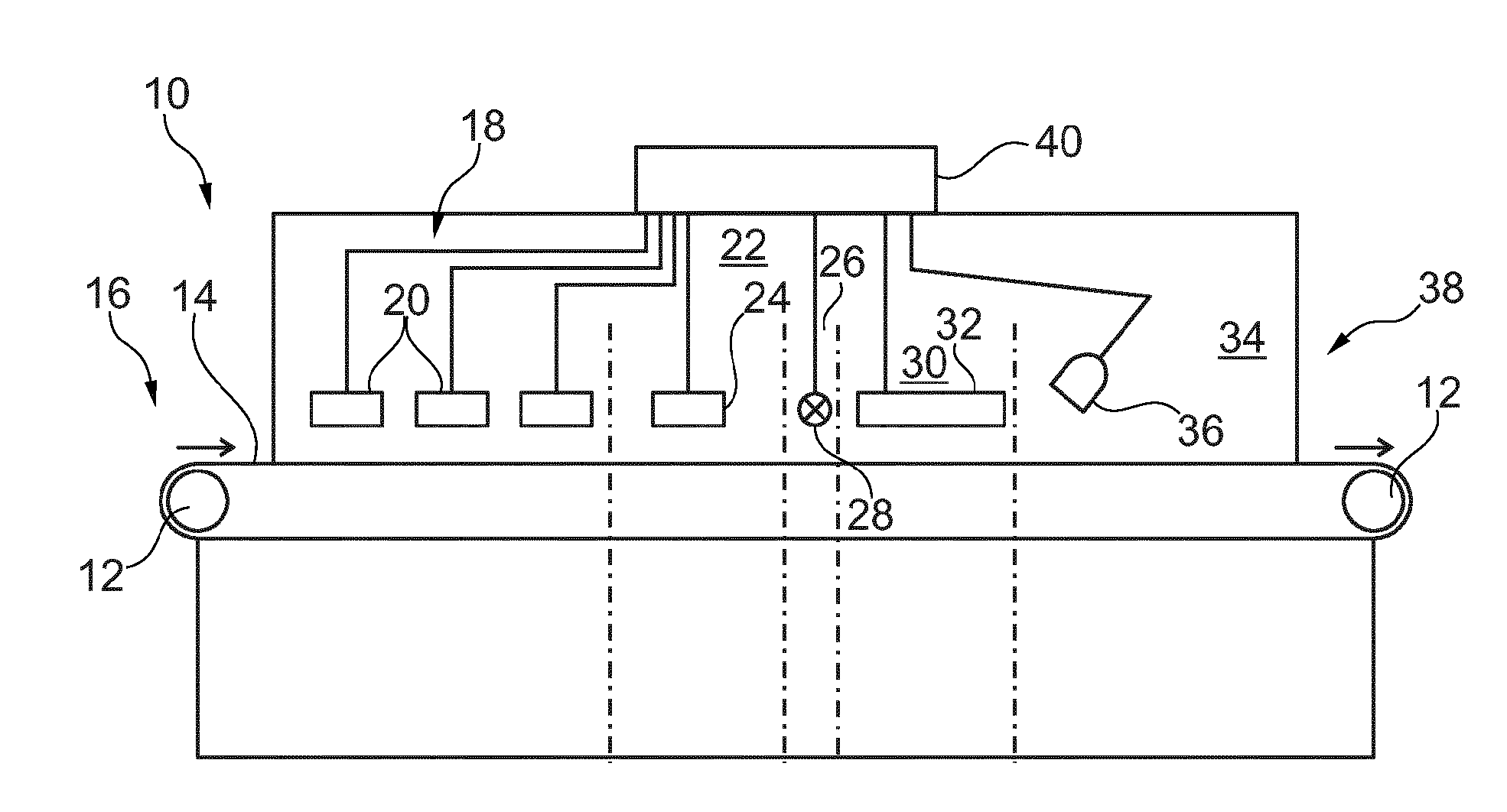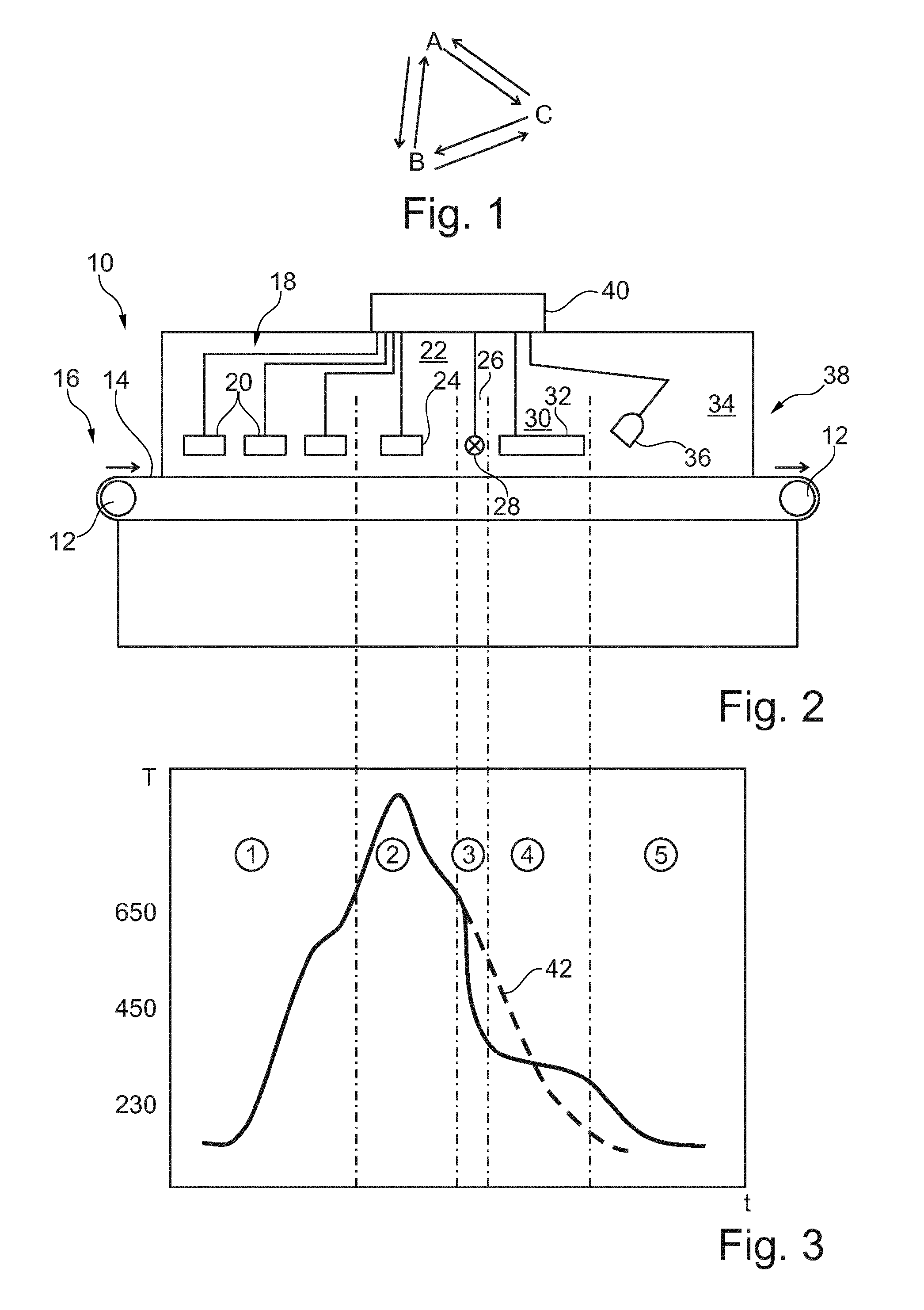Method and device for producing a photovoltaic element with stabilised efficiency
a photovoltaic element and efficiency stabilisation technology, applied in the field of photovoltaic element production, can solve the problems of significant efficiency loss of more than 1% abs, bottleneck in production, and reduce the efficiency of solar cells over time, so as to achieve stable efficiency, short process time, and the effect of producing a photovoltaic element with stabilised efficiency
- Summary
- Abstract
- Description
- Claims
- Application Information
AI Technical Summary
Benefits of technology
Problems solved by technology
Method used
Image
Examples
Embodiment Construction
[0044]Embodiments of the invention described hereinbelow relate in the broadest sense to a method for passivating or rendering harmless electrically active defects in silicon-based photovoltaic elements such as, for example, solar cells and solar modules. In particular, the defects may be boron-oxygen correlated defects, as are described in the literature, which may reduce considerably a quality (described by the (statistical) lifetime of the minority charge carriers) of the starting material and electrical performance parameters, which are dependent thereon, of the solar cell (current, voltage, efficiency under illumination) especially of monocrystalline but also generally of multicrystalline silicon or solar cells. An action of the method proposed herein on other defects too may not be ruled out.
[0045]A solar cell or a solar module is used to convert energy of incident ultraviolet / visible / infra-red light directly into electrically usable energy without using heat as an intermediat...
PUM
 Login to View More
Login to View More Abstract
Description
Claims
Application Information
 Login to View More
Login to View More - R&D
- Intellectual Property
- Life Sciences
- Materials
- Tech Scout
- Unparalleled Data Quality
- Higher Quality Content
- 60% Fewer Hallucinations
Browse by: Latest US Patents, China's latest patents, Technical Efficacy Thesaurus, Application Domain, Technology Topic, Popular Technical Reports.
© 2025 PatSnap. All rights reserved.Legal|Privacy policy|Modern Slavery Act Transparency Statement|Sitemap|About US| Contact US: help@patsnap.com


